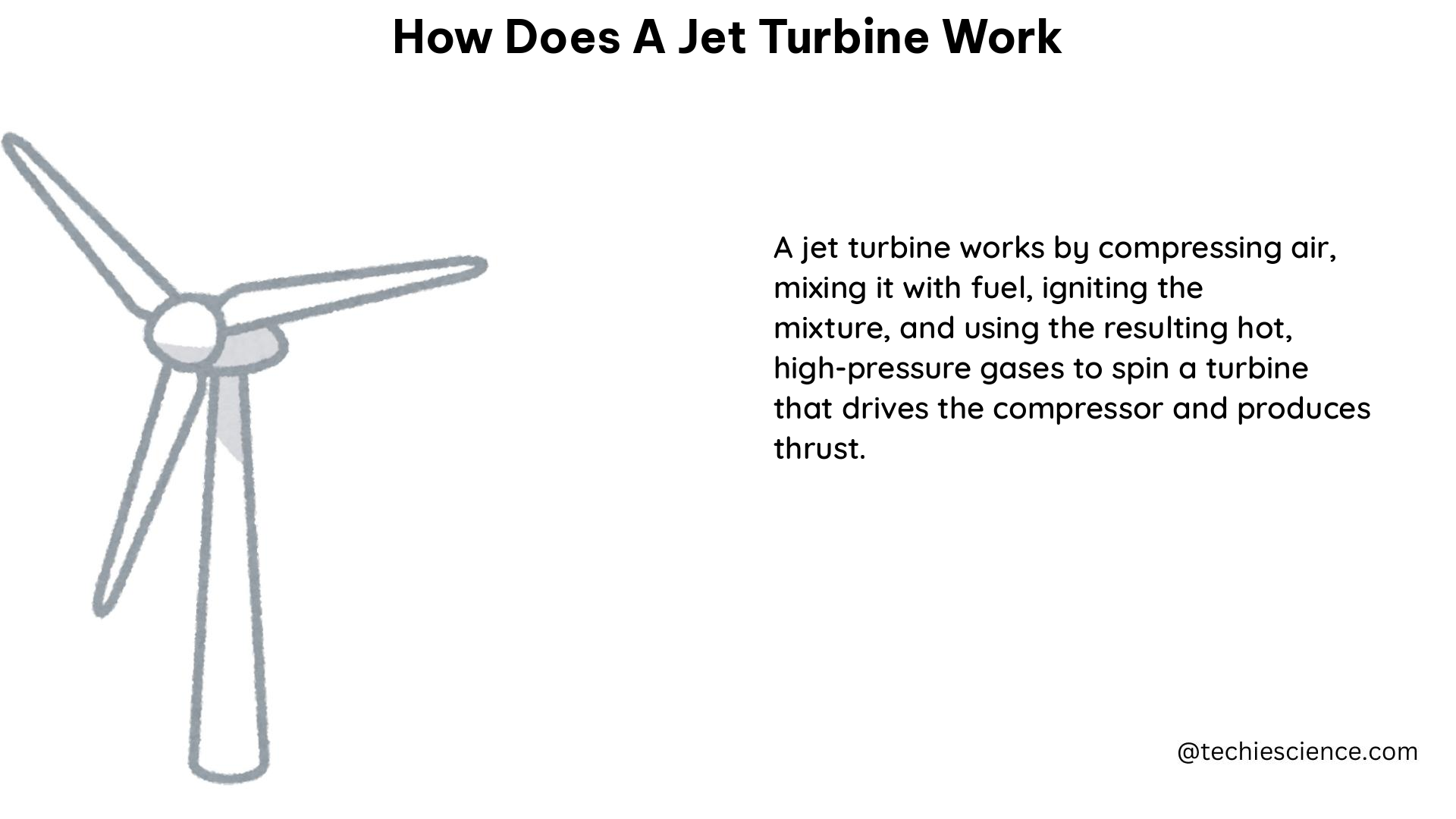A jet turbine, also known as a gas turbine, is a complex and highly engineered device that converts the chemical energy of fuel into mechanical energy, which is then used to propel an aircraft. The working principle of a jet turbine is based on the continuous cycle of air compression, fuel combustion, and gas expansion, all of which work together to generate thrust. In this comprehensive guide, we will delve into the intricate details of how a jet turbine operates, exploring its key components and the advanced technologies that enable its efficient and reliable performance.
The Fundamental Principles of a Jet Turbine
At the heart of a jet turbine’s operation is the principle of air compression, fuel combustion, and gas expansion. The process begins with the intake of air through the front of the engine, where a powerful fan or compressor draws in a large volume of air. This air is then compressed, increasing its pressure and temperature, before being mixed with fuel and ignited in the combustion chamber.
The high-pressure, high-temperature gases produced by the combustion process then expand through the turbine section, causing the turbine blades to spin. The spinning turbine, in turn, drives the compressor, creating a continuous cycle of compression, combustion, and expansion. The energy released by the expanding gases is then directed through the nozzle at the rear of the engine, generating the thrust that propels the aircraft forward.
The Key Components of a Jet Turbine

-
Fan or Compressor: The fan or compressor is responsible for drawing in and compressing the incoming air. This component is typically an axial-flow compressor, which uses a series of rotating blades to increase the air’s pressure and temperature.
-
Combustion Chamber: The combustion chamber is where the compressed air is mixed with fuel and ignited. This high-pressure, high-temperature environment is critical for efficient energy conversion and thrust generation.
-
Turbine: The turbine is a crucial component that extracts energy from the expanding gases produced by the combustion process. As the hot, high-pressure gases flow through the turbine, they cause the turbine blades to spin, driving the compressor and other engine accessories.
-
Nozzle: The nozzle is the exhaust duct of the engine, where the high-speed, high-temperature gases are expelled. The force of the air exiting the nozzle creates the thrust that propels the aircraft forward.
-
Fuel System: The fuel system is responsible for delivering the appropriate amount of fuel to the combustion chamber, ensuring a proper fuel-air mixture for efficient combustion.
-
Lubrication System: The lubrication system provides essential lubrication to the various moving parts within the jet turbine, such as the bearings and gears, to ensure smooth and reliable operation.
-
Control System: The control system monitors and regulates the engine’s performance, adjusting parameters like fuel flow, air intake, and turbine speed to maintain optimal efficiency and safety.
Advanced Technologies in Jet Turbine Design
The design and development of jet turbines have been greatly influenced by the advancements in various engineering disciplines, including aerodynamics, materials science, and computational analysis.
-
Computational Fluid Dynamics (CFD): CFD simulations are used to model the complex fluid flow patterns within the jet turbine, allowing engineers to optimize the design of the compressor, combustion chamber, and turbine for improved efficiency and performance.
-
Finite Element Analysis (FEA): FEA is employed to analyze the structural integrity and stress distribution of the jet turbine’s components, ensuring they can withstand the extreme temperatures, pressures, and vibrations encountered during operation.
-
Advanced Materials: The use of high-performance materials, such as superalloys and ceramic-matrix composites, has enabled the development of components that can withstand the extreme operating conditions of jet turbines, leading to increased reliability and durability.
-
Additive Manufacturing: The adoption of additive manufacturing (3D printing) techniques has revolutionized the production of complex jet turbine components, allowing for the creation of intricate designs that were previously difficult or impossible to manufacture using traditional methods.
-
Digital Twins: The concept of digital twins, which involves the creation of virtual models of jet turbines, has enabled engineers to simulate and predict the performance of these engines under various operating conditions, facilitating predictive maintenance and optimization strategies.
Conclusion
The jet turbine is a marvel of engineering, combining advanced technologies and precise design to convert the chemical energy of fuel into the mechanical energy required for aircraft propulsion. By understanding the fundamental principles, key components, and cutting-edge advancements in jet turbine technology, we can appreciate the remarkable engineering feats that have made modern air travel possible. This comprehensive guide provides a deep dive into the inner workings of a jet turbine, equipping readers with the knowledge to better comprehend the complexities and marvels of this essential aircraft propulsion system.
References:
1. https://www.grc.nasa.gov/www/k-12/UEET/StudentSite/engines.html
2. https://www.turbinetechnologies.com/portals/0/pdfs/gas_turbine_tech_sheets/univoftoledo.pdf
3. https://www.boldmethod.com/learn-to-fly/aircraft-systems/how-does-a-jet-engine-turbofan-system-work-the-basic-steps/
4. https://www.sciencedirect.com/science/article/pii/S1359431116301978
5. https://www.asme.org/topics-resources/content/how-jet-engines-work

The lambdageeks.com Core SME Team is a group of experienced subject matter experts from diverse scientific and technical fields including Physics, Chemistry, Technology,Electronics & Electrical Engineering, Automotive, Mechanical Engineering. Our team collaborates to create high-quality, well-researched articles on a wide range of science and technology topics for the lambdageeks.com website.
All Our Senior SME are having more than 7 Years of experience in the respective fields . They are either Working Industry Professionals or assocaited With different Universities. Refer Our Authors Page to get to know About our Core SMEs.